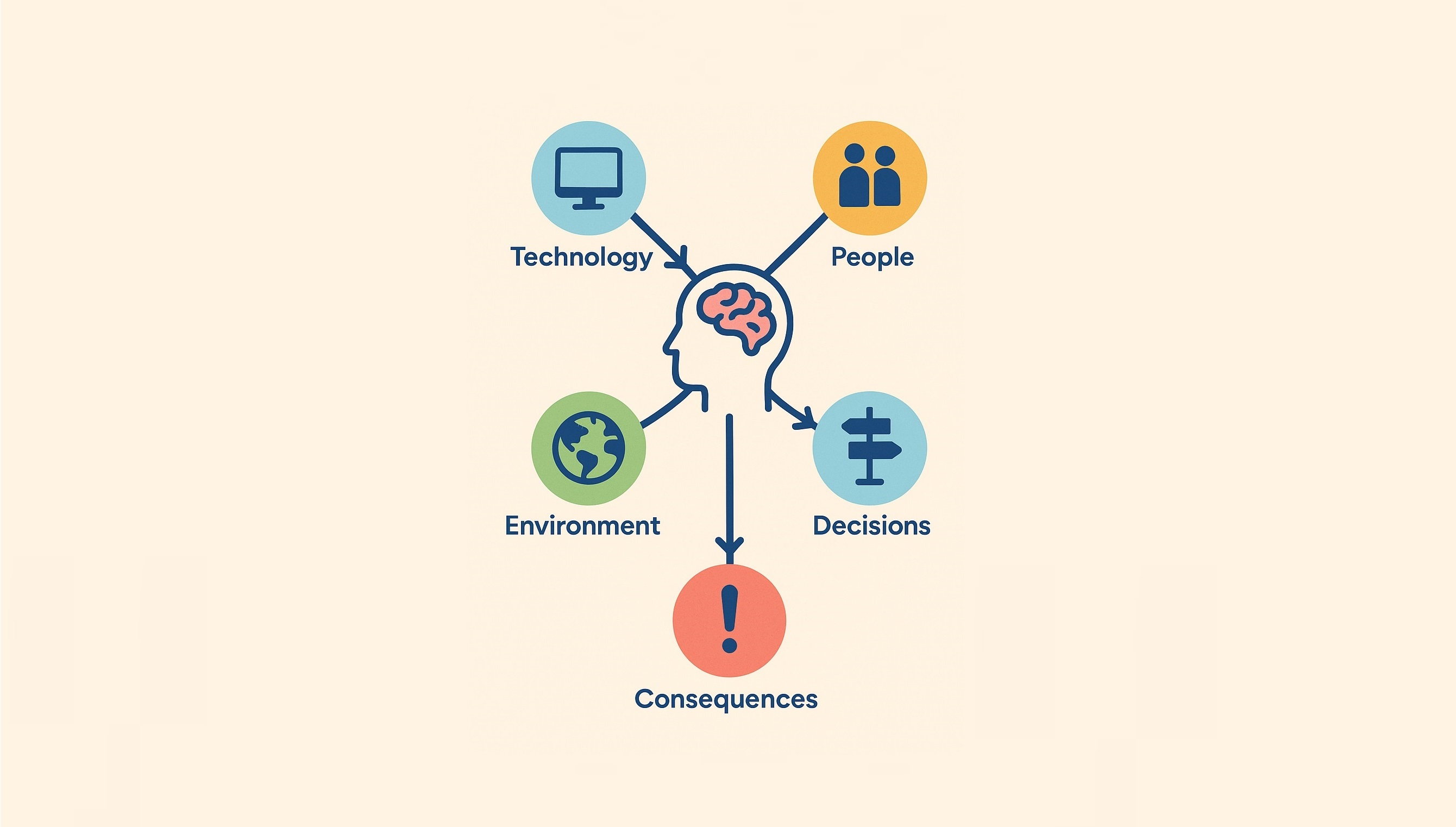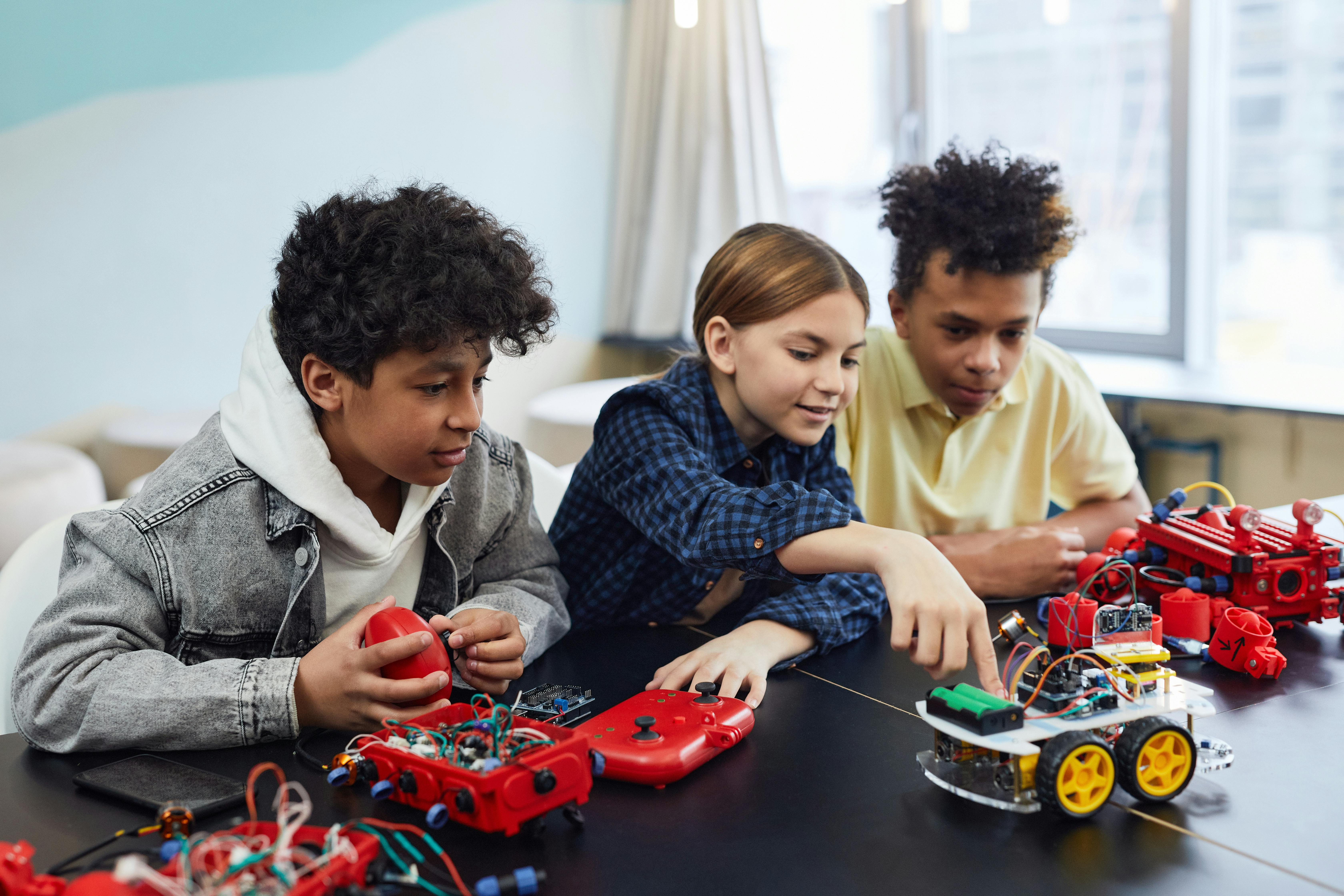Learning to Code, or Learning to Think? (There's a Big Difference)
2025-06-08
You've done the research. You know STEM skills are critical, and you’ve enrolled your child in a coding program. You see them dragging blocks in Scratch or typing lines of Python, and you feel a sense of relief. You’re setting them up for the future.
But what if I told you that the very skill you believe is "future-proof" is on the verge of becoming a commodity? The simple act of writing code syntax is being rapidly democratized by Artificial Intelligence. Tools like GitHub Copilot and ChatGPT can now generate functional code in seconds from a simple plain-English prompt.
The hard truth is this: If a coding program is only teaching your child the what of code (the syntax), they are being trained for a task that AI will soon dominate.
At Clubhouse Academy, we operate on a fundamentally different principle. We believe the true, enduring skill isn't learning to code; it's learning to think. It's about cultivating "systems thinking"—the ability to understand not just the code, but the entire ecosystem in which it operates. This is the skill that builds engineers, innovators, and problem-solvers. This is the skill that is truly future-proof.
The "Syntax Trap": Why Most Kids Coding Programs Are Obsolete
Many coding classes for kids fall into what we call the "Syntax Trap." They focus exclusively on the language—the rules, the commands, and the structure of Python, Java, or a block-based language.
This approach creates what we call a "Recipe Follower."
Think of a cook who can only follow a recipe. They can meticulously measure and combine ingredients in the exact order prescribed. But if an ingredient is missing, or if a substitution is needed, they are completely lost. They don't understand the why behind the steps—how the acid in the lemon juice balances the fat, or how searing creates the Maillard reaction for flavor.
A Recipe Follower can replicate, but they cannot create.
This is the limitation of teaching only syntax. A child might learn how to write a for loop, but they won't understand why a for loop is the most efficient tool for a specific data-handling problem, or when a while loop would be better. They are learning to be a typist for a language whose grammar rules are being automated away.
The Bottom Line: A skill that can be replaced by a simple text prompt is not a foundation for a career. It's a house of cards in a hurricane of technological change.
The Real Future-Proof Skill: Systems Thinking
The alternative to the Syntax Trap is Systems Thinking. This is the mindset of an engineer, a designer, and a true innovator.
Systems Thinking is the ability to see the bigger picture and understand how all the parts of a project connect to create a functional whole. In the world of technology, this system has three core pillars:
- The Software (The Code): The logic and instructions that tell the system what to do.
- The Hardware (The Machine): The physical components—the sensors, motors, microcontrollers (like an Arduino), and power sources—that interact with the real world.
- The User (The Purpose): The human being with a need or a problem that the system is designed to solve.

AI is becoming brilliant at Pillar #1. But it cannot yet replicate the human ingenuity required to integrate all three. It can't interview a "client" (Pillar #3) to understand their frustration, design a physical prototype to solve it (Pillar #2), and then write the bespoke software to run it (Pillar #1).
That holistic, creative problem-solving process is the domain of the Systems Thinker. This is the difference between a Recipe Follower and a true Chef.
How We Build Systems Thinkers at Clubhouse Academy
Our philosophy is built into the DNA of every program we offer, from our junior robotics classes for kids in Scarborough to our advanced teen STEM enrichment in the Durham Region. We don't teach subjects in a silo; we teach them as integrated tools to solve meaningful problems.
1. Project-Based Learning with Purpose
We don't do isolated coding exercises. Every project is a mission. Students are presented with a tangible goal, forcing them to think like engineers from day one.
- Syntax-Only Approach: "Today, we will learn how to use a moisture sensor and print its value to the screen."
- Clubhouse Academy Approach: "Your houseplant keeps dying because you forget to water it. Let's build an automated, self-watering plant system."
To solve this, a student must engage in systems thinking:
- User Need: "I need my plant to stay alive without my daily intervention."
- Hardware: They must select and connect a soil moisture sensor, a water pump, and a microcontroller (like an Arduino) to a power source. They are learning basic electronics and circuitry.
- Software: They must write code that:
- Reads the data from the sensor.
- Uses an
ifstatement to decide if the soil is too dry. - Activates the pump for a specific duration if it is.
- Applied Math: They have to calibrate the sensor threshold and calculate how long the pump should run to deliver the right amount of water.
The code is no longer an abstract exercise. It's a tool with a purpose.

2. Integrated Engineering, Not Just Code
For teens in our Markham and North York programs, we take this even further. We build complex robotic systems where code is just one piece of the puzzle.
Consider the challenge of building a line-following, obstacle-avoiding robot:
- Mechanics: They must design and build a chassis that is balanced and stable.
- Electronics: They must wire infrared sensors, motor drivers, and the main processor, managing power distribution correctly.
- Software: They write the control logic—a far more complex task that involves sensor feedback loops and motor control algorithms.
This is what sets our robotics for teens programs apart. They aren't just downloading code to a pre-built kit. They are building the machine and its brain, learning the deep interplay between the physical and digital worlds.
The Outcome: Confident, Resilient Problem-Solvers
When your child learns through this integrated method, they gain far more than technical skills. They build the character traits of a true problem-solver.
- Resilience: Debugging code that makes a physical motor spin the wrong way is a more complex and tangible challenge than fixing a typo on a screen. It teaches persistence.
- Creativity: When you give a student a box of parts and a problem instead of a set of instructions, you unlock their innate creativity to design a unique solution.
- Purpose: By solving real-world problems, students discover their "why." They see that technology is not just for games or apps, but a powerful tool for making a tangible impact on the world around them.
The question for parents in the Greater Toronto Area isn't just "which coding class is best?" It should be, "Which program will teach my child a way of thinking that will serve them for the rest of their life, no matter how technology evolves?"
Don't settle for syntax. Demand a curriculum that builds a Systems Thinker.
Take the Next Step Beyond Code
Ready to see how our project-based, integrated engineering programs can unlock your child's potential as a confident problem-solver? We invite you to see the difference for yourself.
Click here to book a free assessment and tour of our academy.
Clubhouse Academy: Learn with Purpose.
We are a STEM enrichment academy in the Greater Toronto Area for students ages 6-17. Instead of just teaching code, we build confident problem-solvers through integrated engineering projects and applied math, helping them discover their "why." Explore our unique pathway at https://clubhouse.academy.
Serving families across the GTA, including Scarborough, Markham, North York, Durham Region, Ajax, Pickering, Whitby, and Oshawa.